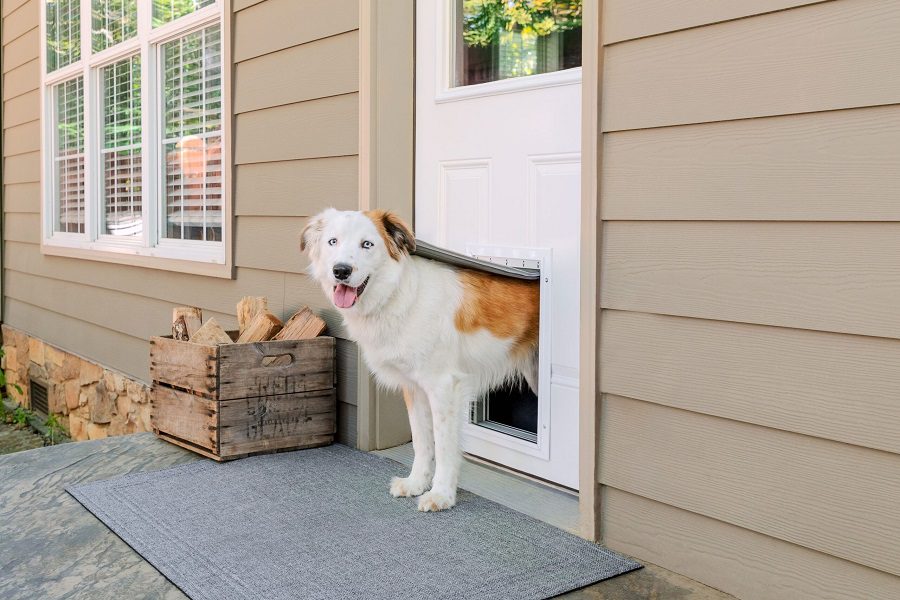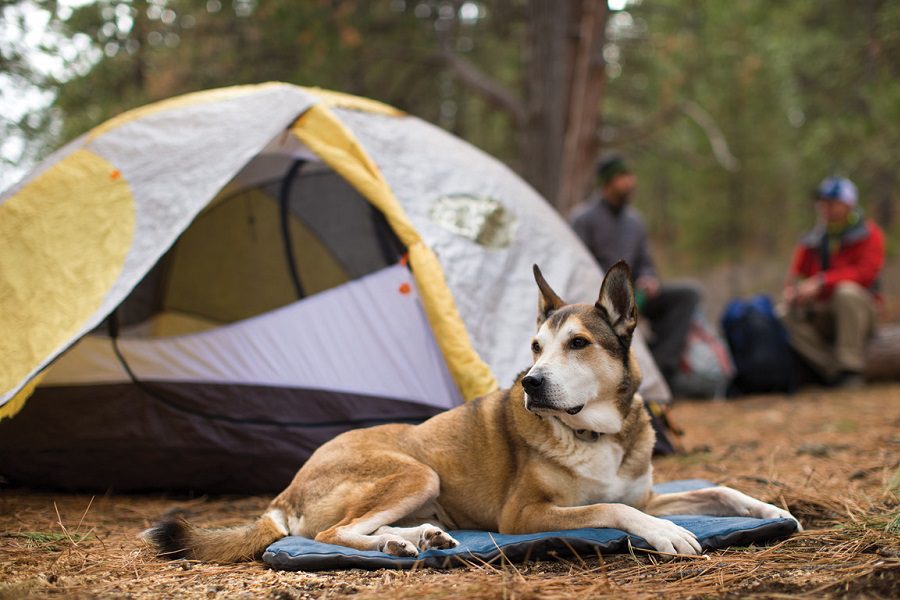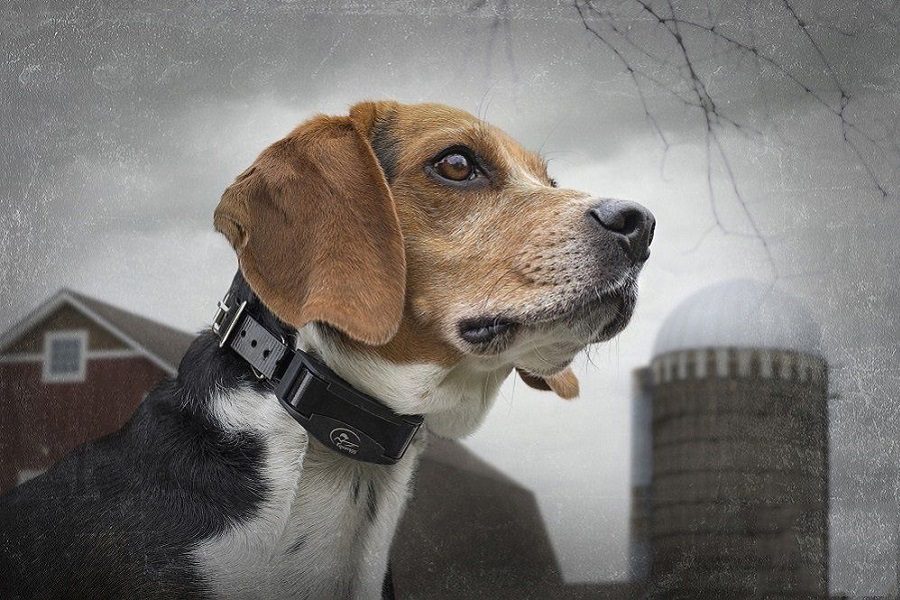Last Updated: 2 years ago
Do you have a new puppy in the house that you want to start training or are you trying to teach your current dog some new things?
Contrary to popular belief, you can teach old dogs new tricks if you work at it, and you can definitely teach a puppy or another dog entering your house for the first time.
But owners that try to teach their dogs on their own, without any tools or guidance, often end up frustrated. I didn’t know what I was doing when I first started training my dog and made all of the mistakes and fell into all of the pitfalls that a person could.
This site is dedicated to helping you learn to train your dog better and avoid those pitfalls.
Why You Need A Dog Training Guide
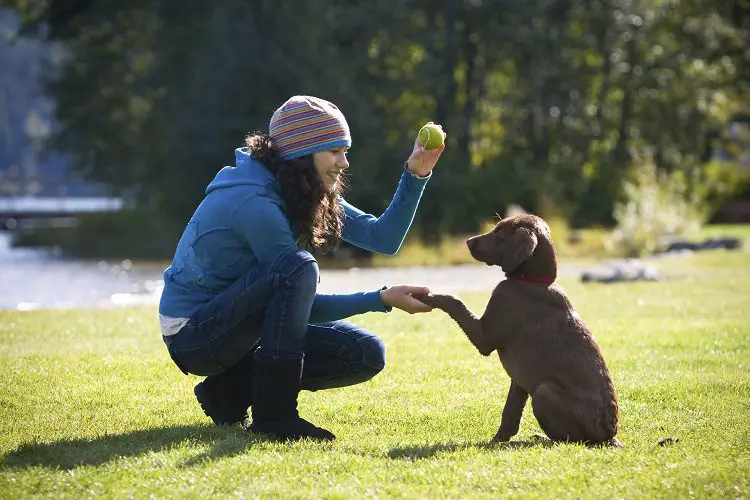
There are lots of reasons that you need a dog training guide.
Most people simply don’t have the knowledge or the skills to train their dogs properly, and there is no reason to be ashamed of that. Animal behavior is complex and only an animal psychologist really understands it completely.
A dog training guide can help you teach your dog faster, get them to respond more quickly and overall, develop a better relationship with your dog. Understanding what drives dogs, what motivates them to misbehave and what techniques work when it comes to training, are all vital to the process.
In addition, there are a number of tools that can help you train and choosing the right one for your particular dog is essential.
According to breeding expert Sue Williams, science is the key to success when it comes to training dogs and it is something that she employs in her own training business.
Tools like training crates and collars and the right books to teach you how to train your dog can be amazing tools that may be the difference between an obedient dog and one that barks, runs away, or is aggressive. These tools and techniques are required if you want success with dog training.
Basic Dog Training
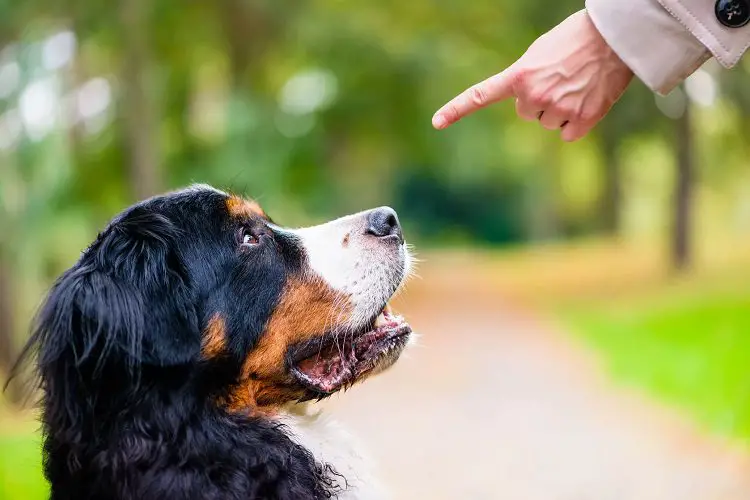
So, what is basic dog training?
It is the beginning point where you teach your dog to be obedient. The initial stages of training is all about teaching yourself how to teach, and teaching your dog how to learn. The actual behaviors that will be taught differ with each trainer and training method.
That’s because it isn’t the behavior that is important when you begin teaching your dog. Unless you only want your dog to learn a single behavior and never plan on teaching anything else again, you want to make sure that you prepare him (or her) for learning.
That’s why teaching your dog how to learn is the most important step in the process.
An Overview Of The Most Common Dog Training Methods
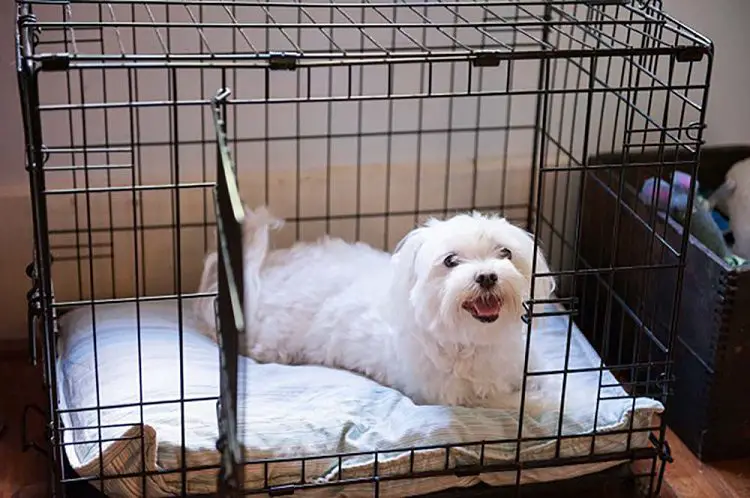
When it comes to dog training methods there are various tools that make the process easier. Learning which of these tools will work for you and how to use them properly is going to go a long way toward the “training yourself” step that we discussed earlier.
Let’s go over some of the most common types of training tools and explain how they can be used to teach your dog safely and effectively.
The Crate
There has been some controversy over this particular training method for a while now.
Some people believe that it is inappropriate to put your dog in a cage but according to the American Kennel Club not only is crate training recommended by vets and breeders, but it is also the best method out there for training dogs
The problem is most people use crate training as a punishment and that’s not how it should be used at all. Instead, you want your dog to feel safe and welcome inside the crate. We will get into more detail on how to use crate training in a later section.
The Collar
The next type of training tool is the dog collar
Remote training collars are sometimes called shock collars because they give the dog an unpleasant sensation much like electricity. However, the levels are extremely low and there is no danger in injuring your dog, particularly if you use it on the lowest level.
Training collars also need to be used in a very specific way, and most people don’t use them this way at all.
We will be discussing the dog collar in further detail in section four, and teaching you how you can use it as an effective, safe training tool, and what you need to avoid in order to make this type of training tool ineffective.
The Whistle
Training whistles are another effective tool in your toolbox. Dog whistles are high-pitched and get a dog’s attention when they are used. Training whistles have a number of advantages over training methods that just use vocal commands.
Sometimes, children or friends try to train your dog and can ruin the hard work that you have been putting in. A training whistle eliminates that problem because the dog knows that it is only important to respond when they hear the whistle.
Finally, the sound of a whistle can go a lot farther than you can yell, which means you can communicate with your dog over longer distances. You can call them back or get them to perform a behavior (or stop a behavior) without shouting yourself hoarse.
The Clicker
The final tool that we will discuss here is the clicker.
Dog clickers are also excellent training tools and for a couple of the same reasons that are listed above for dog whistles. Clickers work by introducing new behavior and letting your dog know which behaviors are getting treats.
The problem with many trainers is that they use clickers to get the dog’s attention and the clicker loses its potency.
The only way that you can get your dog to always pay attention when you use the clicker is if you follow it with a treat and then transition into showing your dog that it is responding to you that earns the treat. We will get into more detail on that technique in section four.
Building A Relationship
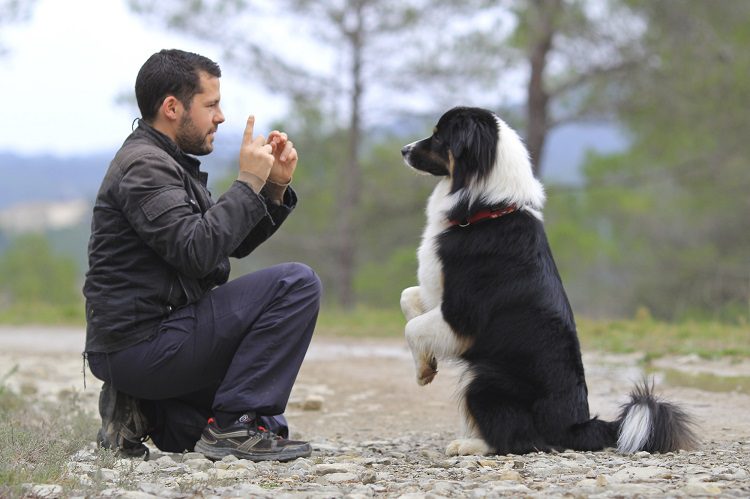
As previously mentioned, your first step is to teach your dog how to learn. However, you must also teach yourself how to teach. Once you are willing to teach, the right way and your dog is willing to learn, everything will come easier.
In order to do that, you need to accomplish some pretty big steps, which will differ depending on how long you have had the dog, the age of your pup and sometimes, even the breed will make a difference.
However, according to dog training expert Jonathan P. Klein, your first step should be establishing that you are the pack leader. However, before we get to how to do that, you want to ensure that you yourself are ready to start training.
Training Yourself To Train Your Dog
So, your first step is going to be preparing for your training sessions. What this means is that you need to leave all of your own baggage at the door. When you start training your dog, you just want your session to be about the training.
If you had a bad day at work, are currently fighting with your spouse or are experiencing other problems, you need to leave them behind when you are training your dog.
Dogs can sense anxiety and fear. They can tell when you are frustrated. You have to come into your training session calm, collected and ready to work.
If you are distracted, thinking about other things, or you are frustrated with another area in your life, it will come through and your dog will not learn effectively. Instead, they will be worrying about (and wondering) what you are upset about.
This also goes for your frustration with your training session. You cannot get angry at your dog because he or she is not learning at the pace you think he ought to.
You simply have to be patient and consistent, and keep teaching, even when you feel like they will never learn. Eventually, you will be able to see your training pay off, but it may take longer than you expected.
Making Yourself The Pack Leader
There are certain steps that you need to take in order to establish your position as “leader of the pack.” You will have a much easier time training your dog and getting him or her to stop bad behaviors if you are considered the pack leader.
Start with your demeanor when you are dealing with your dog. Pack leaders are calm and assertive, not emotional and nervous. Pack leaders in the wild enforce rules subtly and quietly, and they are consistent about it.
Setting rules and making sure that your dog is punished when he breaks those rules is essential. Punishment such as a “bad dog” will make him realize that he crossed the line, but unless you actually punish him consistently when this happens, he isn’t going to respect you.
The third thing that you can do to establish your position as pack leader is to make sure that you are giving your dog work to do before mealtime. Take your dog for a walk before defeating them.
Make him calm down and stop the behavior that you are trying to correct before you will be affectionate. All of these things will help establish your dominance and make you a better trainer.
Building Trust With Your Dog
You’re going to need to build trust with your dog if you want to be an effective trainer. The first step in building trust is the make sure that you spend enough time with your dog.
When you play with your dog, train him or simply sit on the couch with him, you are getting to know your dog and he or she is getting to know you. This is important when it comes to training.
Be fair to your dog as well. If your dog does what you ask but you are in a bad mood and do not perform the usual reward behavior, you are sending a bad message. If you have more than one dog, make sure that you do not favor one dog over the other and always play fair.
You also need to be consistent. Dogs like a predictable environment and they like their owners to be stable. When they know they can depend on you to make sure that their food and water bowls are always full (or filled at a certain time) they will be more willing to follow rules that you set down.
When you are positive and consistent with your dog, trust will grow.
You also need to be able to see the world through your dog’s eyes and this requires that you do some research and understand exactly what it is driving dogs and why they act the way they do.
There are documentaries out there that will show you what dog behavior means as well as thousands of books, websites and many more media materials.
Understanding The Difference Between Mischief And Malice
You also need to understand that there is a difference between mischief and malice.
Your dog may not be misbehaving on purpose, but instead is just really excited and has forgotten the proper behavior. Learn to differentiate between when your dog is playing and when you actually need to be concerned about correcting behavior.
This is most apparent when it comes to aggressiveness. Most pet owners can tell the difference between when their dog is playing, even when he or she is growling or pretending to bite, and when their dog actually means to injure them.
Of course, most dogs never do intend injury but you want to look at other behaviors and realize that your dog may not be doing it just to make you angry.
Training Dog Behaviors
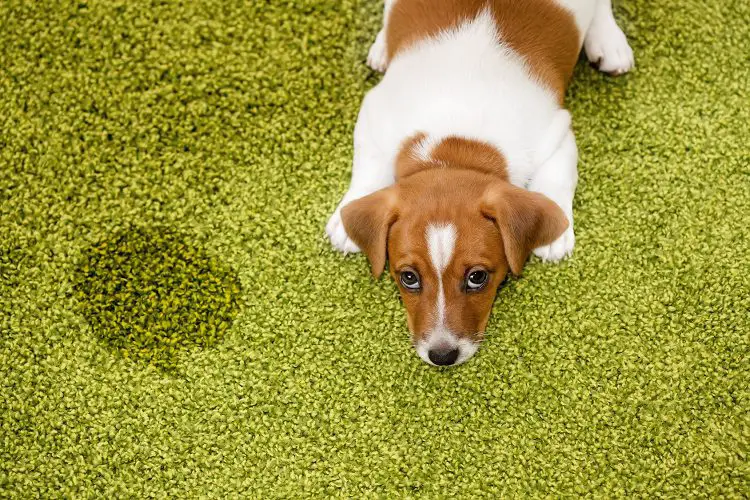
This section will deal with various specific behaviors that you might be attempting to teach your dog.
For example, potty training a puppy will have its own pitfalls and idiosyncrasies while training an older dog to do tricks or walk on a leash has completely different techniques and problems.
Dog Potty Training Tips
Let’s start with dog potty training tips. Many people ask why dog potty training is so difficult, and the answer is simple – dogs are genetically predisposed to urinate on things.
Look, suppose you lived in a house with roommates where the rule was, anything without a name on it was fair game. You’d be walking around putting your name on everything from your pillow to the food in the cupboard that belonged to you – and anything else without a name for that matter.
Strange metaphor aside, that’s exactly what dogs are doing. They have been conditioned by genetics and evolution to mark out their territory with the scent of urine, which is unique to every dog.
They can stop doing it, but you have to train and train and train to overcome millions of years of evolution. Here are some tips to help you, straight from pet expert Mikkel Becker.
Be patient
Your dog will be progressing at his or her own pace.
You can’t rush things and get angry or visibly frustrated is just going to hinder the training process.
Make Sure There Is Enough Time
Make sure that your dog has the opportunity to use the bathroom within the first fifteen minutes after meal time.
This is generally when dogs need to go and keeping them from going outside during this time may result in some accidents.
Rewards
Reward your dog for going to the bathroom if he does it within five minutes of you taking him outside.
But don’t punish him for not having to go.
Don’t Punish Accidents
Don’t punish your dog for having an accident.
Instead, simply get him to the area where he is supposed to go to the bathroom.
Make time For Your Dog
Make sure that you were not forcing your dog to urinate indoors by keeping them in for long periods of time.
For example, take your dog out at night. If you get up once during the night and let your dog out to use the restroom there is much less chance of an accident.
Dog Obedience Training Tips
When it comes to obedience training, there are a few things that you can do to improve your chances of success. First of all, keep in mind that you should be doing each command for about five minutes and then come back to it at a later date or time.
You also need to keep in mind that you shouldn’t practice the command only in one spot. When that is the case, your dog will learn that they only have to obey that command when they are in that certain spot. Practice it all over the house and outside as well.
You also need to be able to read your dog’s body language. Dogs communicate with each other using body language like posture, facial expressions, odors and noises.
Dogs will use many different parts of the body to express their emotions and learning how to interpret their actions correctly will help you in your training.
You also need to understand that barking and whining is very natural for your dog.
It is as if someone asked you to control your breathing. Barking and whining should not be a behavior that gets consistently punished but dogs need to learn when it is appropriate bark or whine.
Leash Training A Dog
When it comes to training a dog to walk on a leash there are certain techniques that are more effective than others.
Understanding these techniques and what kinds of things you are doing that make your dog want to disobey you on a walk will make you a better trainer.
When your dog goes out with you on a walk he or she needs to know that you are the one in charge. If you allow your dog to pull on the leash and not reprimand him for doing so, you are basically giving your dog permission to pull you along and lead the journey.
Teach your dog that when he is on the leash he needs to come to you when you call. Hold his reward until he gets to you. Back up a few steps and make him come to you again and then give him his reward.
You are going to have to come up with some sort of cue sound that will let him know that you want him to respond. It shouldn’t be a different command every time; it can be one word as long as you are consistent. For example, many people use the word “come” as their cue sound.
Your dog may have other problems while on the leash. Some dogs pull or lunge toward things when they go out on the leash for the first time and others tend to bark at other animals or even passing cars.
You will have to figure out ways that you can correct these problems if your dog exhibits them on a walk.
Dog Training Commands
There are a few things that you should know about dog training commands if you are planning on teaching your pup to respond to these. Basic dog training commands like sit, roll over or lie down are very common among dog owners as are the shake and play dead commands.
But these behaviors have to be taught. Dogs just don’t come with this innate knowledge on how to roll over, sit or play dead.
You have to teach them and you have to teach them patiently. Whether you’re teaching basic or advanced dog training commands, here are a few tips to keep in mind.
The words that you want for obedience commands should be short and sound sharp. The way that you say the command has a lot to do with how the dog will respond.
You also want to make sure that the command is something that you can remember easily. It will do you no good to teach your dog a command if you forget it.
Of course, you also need to use words that are not very common in everyday speech because you don’t want your dog getting confused when he hears the command word is being said – especially with the inflection that you use on commands – in normal conversation
Training Methods
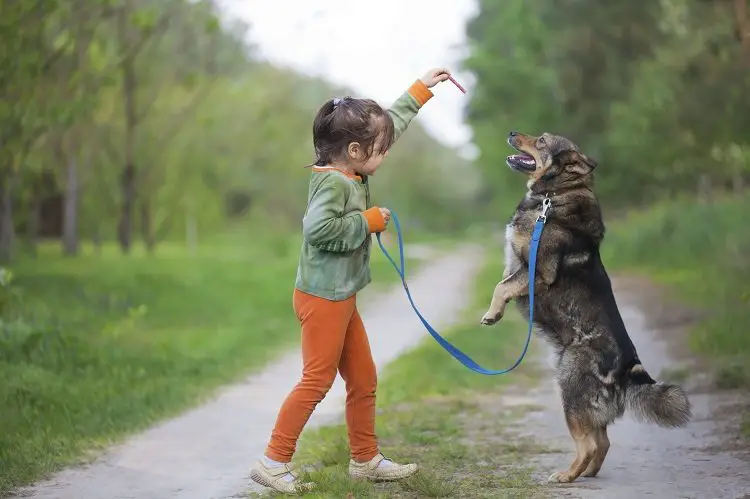
In section four, we’ll discuss some of the various training tools that are out there and how you can use them to improve your training techniques.
For example, dog collars are one of the most effective tools for training your dog, and if used properly, will make your dog learn better and faster, and leave you less frustrated. There are various other methods discussed here as well.
Training Dog Collars
The first training tool that we are going to discuss is the dog collar. Training dog collars can be extremely effective and help you teach your dog the proper behaviors but you have to use them properly.
The goal of using a training collar, according to veterinarians Dr. Race Foster and Dr. Marty Smith, is to get your dog’s attention and provide negative feedback when he or she is misbehaving.
The experts say that you don’t just want your dog to correct this behavior when he or she is around you. Animals will realize that you have control of the collar and will continue to exhibit that behavior when they think you are not around.
That’s why the best plan is to use the corrective collar to adjust their behavior while watching out the window or hiding somewhere where they can’t see you.
Remember, always use a training collar at the very lowest setting that you can get your dog’s attention with. Your goal is not to punish your dog; your goal is to get attention.
The only time you should need to turn up the juice is when your dog is particularly excited and is not paying attention to the training collar on the lowest setting.
Dog Clicker Training
Dog training with clicker devices is another way that you can get your dog’s attention for training.
There are two steps that go with clicker training. The first is to follow up the click with the treat – every single time. This allows your dog to associate that with getting a treat and then they will pay attention when it happens.
The next thing that you have to do is teach them that it isn’t the click that is going to earn them the treat but paying attention to you instead.
The way that you can do that is by making sure that you always have treats with you but that you aren’t always using them. Some dogs will only behave when they know that they have a chance of getting a treat. You want your dog to pay attention and follow commands no matter what.
You also need to be aware that getting your dog’s attention when it is not a training session is going to negate all of the effects from the clicker.
Don’t use the clicker just to get your dog’s attention for no reason. They need to learn that the sound of the clicker is solely to show them what behavior is earning treats at the moment.
Benefits Of Crate Training A Dog
Learning some tips for crate training a dog is important because most people do it incorrectly. Most people use the crate as a punishment and this is not effective at all.
The best way to use the crate is to create a safe haven for your dog where they can go and relax and have their own space.
The crate acts as a den for your dog, something that they have been using for millions of years. While some people worry about putting a dog in a crate, your dog would ask you if he or she could.
Crate training has so many uses, particularly for young puppies, because you can’t watch them every second and putting them in a crate will help to solve a lot of those babysitting problems.
In addition, dogs that are traveling can get anxiety because they are not in their familiar spaces and that’s where crate training can come in. The crate is their familiar space until they get used to your hotel room or whatever the new area is.
Insecure dogs like rescue dogs will also benefit from the crate. Dogs are responsible for their territory and if the territory is large, this can really stress out an insecure dog. But in the crate area, the spaces are much smaller; it will reduce stress instead of create it.
Whistle Training Dog Techniques
Dog whistle training is another attention-getting method of training your dog. Dog whistles have a few benefits like being able to be heard farther and the inability of humans to hear them, at least if you choose that particular whistle.
If you want to buy a dog whistle, make sure that it has a consistent sound and that it carries for long distances. You can set the frequency on some dog whistles and while some people say that different breeds require different frequencies it is simply not true.
There are both silent whistles and ones that humans can hear; your personal preference will determine which you buy, but the most important thing is to make sure it is heavy-duty and durable because you are probably going to drop it and even step on it at some point.
Troubleshooting
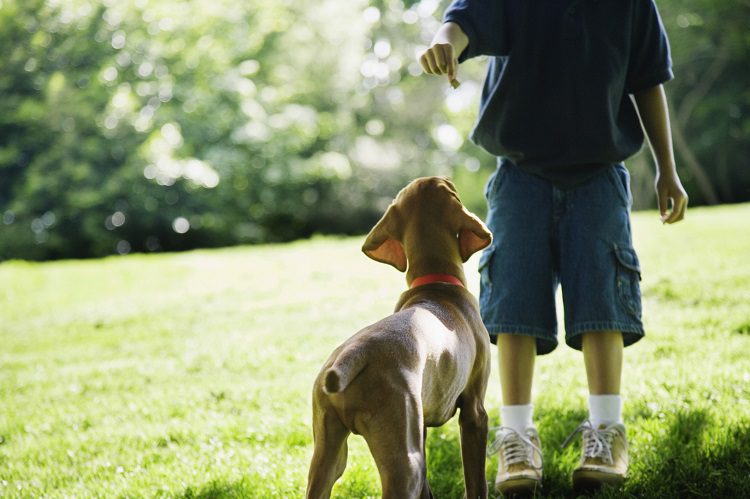
No matter how good you are, or which training tools you use, there is still a chance that you might not be able to train your dog as easily as you should.
Some of this will have to do with the dog itself, and others may be your training techniques. The important thing is that you carefully look at everything and find out exactly what the problem is.
Reasons Your Dog Might Not Be Learning
- You might not be training your dog often enough. You need to be consistent with your behavior training. That doesn’t mean the same time every day; it just means that you don’t want to leave off training for weeks, because they will forget everything you are trying to teach them.
- Your training sessions are not timed right. Dog training sessions need to be about fifteen minutes maximum because your dog does not have the greatest attention span. But the end of the sessions should actually be decided when you have achieved a result, not at the end of fifteen minutes exactly.
- Your training is inconsistent. Many people enforce certain rules when they feel like it and not at other times. Dogs need to know that there pack leaders are consistent and have the same set of rules all the time. If you are inconsistent your dog is going to get confused and is not going to know when he or she should be following rules. Set the rules and then stick to them.
- You also may not be confident enough. Your dog is going to sense when you’re not confident as his or her trainer. Your dog needs to feel that you believe in yourself before he will follow your commands. This is why people are frightened of dogs get bitten more often than people that are calm.
- While treats can be a great training tool, you also need to reward your dog with praise and esteem. If your dog is working only for treats then what are you going to do when you want to correct behavior without them?
- You don’t train in enough places. If you teach your dog to sit at the park and that is the only place that you train, it is the only place that your dog is going to sit. Instead, you need to be training in all parts of the house as well as outside so that your dog knows that the command means to sit in a matter where they are.
- You also need to be aware that using too much emotion is going to confuse your dog in making training difficult. A pack leader is calm and collected, so when you start training you must leave your emotions behind.
Dog Training Books
There are also lots of dog training books that are on the market that will help you troubleshoot why you are still having trouble training your dog.
You can learn different training techniques from people who have many years of experience training dogs and other animal experts like veterinarians, breeders and scientists that study dog behavior.
Of course, not every book out there is going to be accurate or is going to work for every dog. You will need to come up with your own training regimen that fits your and your dog’s personality.
The advantage of using dog training books is that you are able to figure out what is going wrong with your own training and understand dog behavior better because you can often find one for your breed or style of training specifically.
It is important to research body language; facial expressions, sounds and other dog behaviors so that you know what your dog is thinking. This will help you become a much more effective trainer.
Rescue Dogs
You should be aware that with rescue dogs it can take more time to train them because they have already learned many habits. Rescue dogs require a great deal more patience and perhaps even professional help because their behaviors are deeply ingrained in them already.
But rescue dogs can be one of the most rewarding pets out there and you can train them with enough work and patience.
Just remember to take it slow, one short training session at a time and don’t expect results after a particular period of time. Be sure to reward your rescue dog immediately when he or she does something correctly.
Hiring A Professional Trainer
If you are still having trouble after you have read dog training books and tried out all of the techniques that you can think of, you may need to hire a professional dog trainer. Professional dog trainers vary considerably when it comes to skill level, education and experience.
Some dog trainers actually have a college education in pet behavior or pet science. Other dog trainers just have been working with dog so long that they have become experts in the field.
It is important to do your research carefully when you are considering hiring a trainer because the wrong trainer can undo all the hard work that you have accomplished with your dog.
Conclusion
There are so many ways out there to train your dog, and so much differing advice. It can be difficult to know what to pay attention to and what to ignore.
But the main thing that you should take away from all of this is that dog training is possible – with any dog – as long as you have the right technique and the right tools.
Tools like dog crates, dog whistles and clicker devices are all things that can help you train your dog more effectively. But you have to use these tools properly.
You also have to use the techniques that have been outlined here as well as the information you find in your own research to train better.
The right combination of tools and techniques will allow you to train any breed, rescues, strays, or even older dogs, no matter what behavior you are trying to teach.

